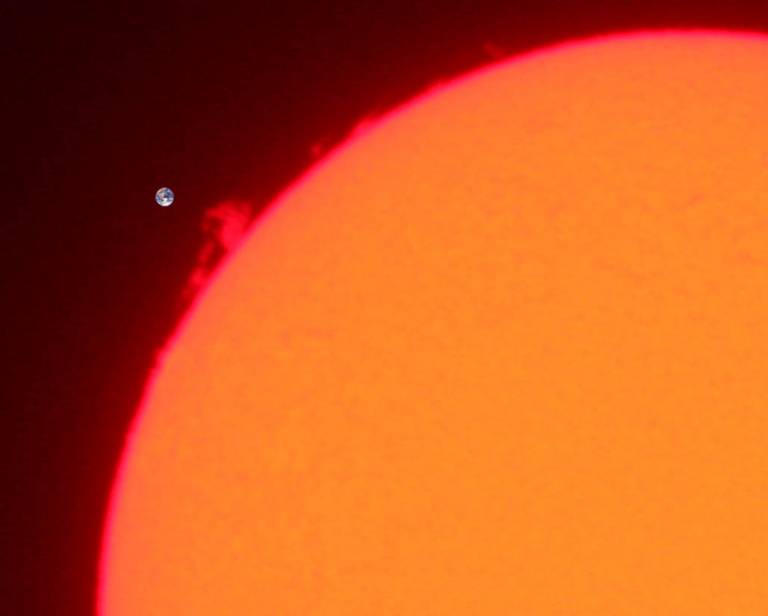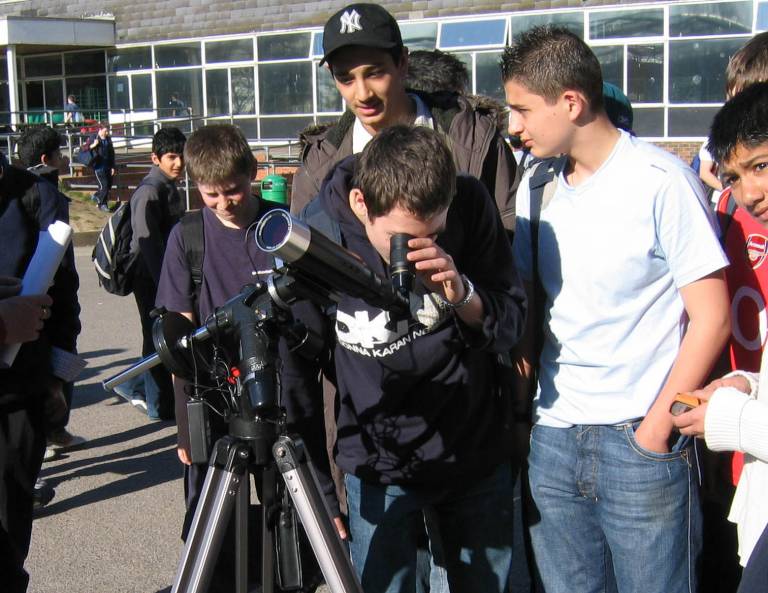The lectures include colourful views from powerpoint presentations, with topics including:
- Movements of the sky (constellations, mythology of the sky, early ideas)
- The Magic of Solar and lunar eclipses (history, beliefs, beauty and science of eclipses)
- The solar system (scale models, discovery and exploration of alien landscapes)
- The lives of stars (stars as the producers of planets, life and people)
- The secrets of star rainbows (basic spectroscopy and astrophysics)
- Life in the Universe (What is life? Are we alone in the Universe?)
- Our place in the Universe (How big and how old is the Universe?)
Visiting lectures to schools have proven very popular too. Usually, the audiences are between 100 and 200 pupils (several classes together). The sessions are highly interactive, mainly driven by a torrent of relevant questions about space, life in the universe and black holes.
There are also important links to related areas in the National Curriculum, like properties of materials, light, forces, chemistry and biology. The lectures can take place in a typical school classroom or even better in the assembly hall. A typical lecture will consist of an interactive presentation (around one hour) with practical demonstrations in which the children are welcome to participate.
Weather permitting, students will be able to observe the sun in the light of the red hydrogen line, using a specialised portable solar telescope (funded by a grant from PPARC).
Hydrogen image of the sun showing a few giant prominences on the edge as seen by school children with the portable telescope. The earth is shown to give a sense of scale.In all cases, teachers get a pack with posters, graphic material, wall charts, and a video on solar eclipses co-produced by Dr Diego at UCL.


 Close
Close

